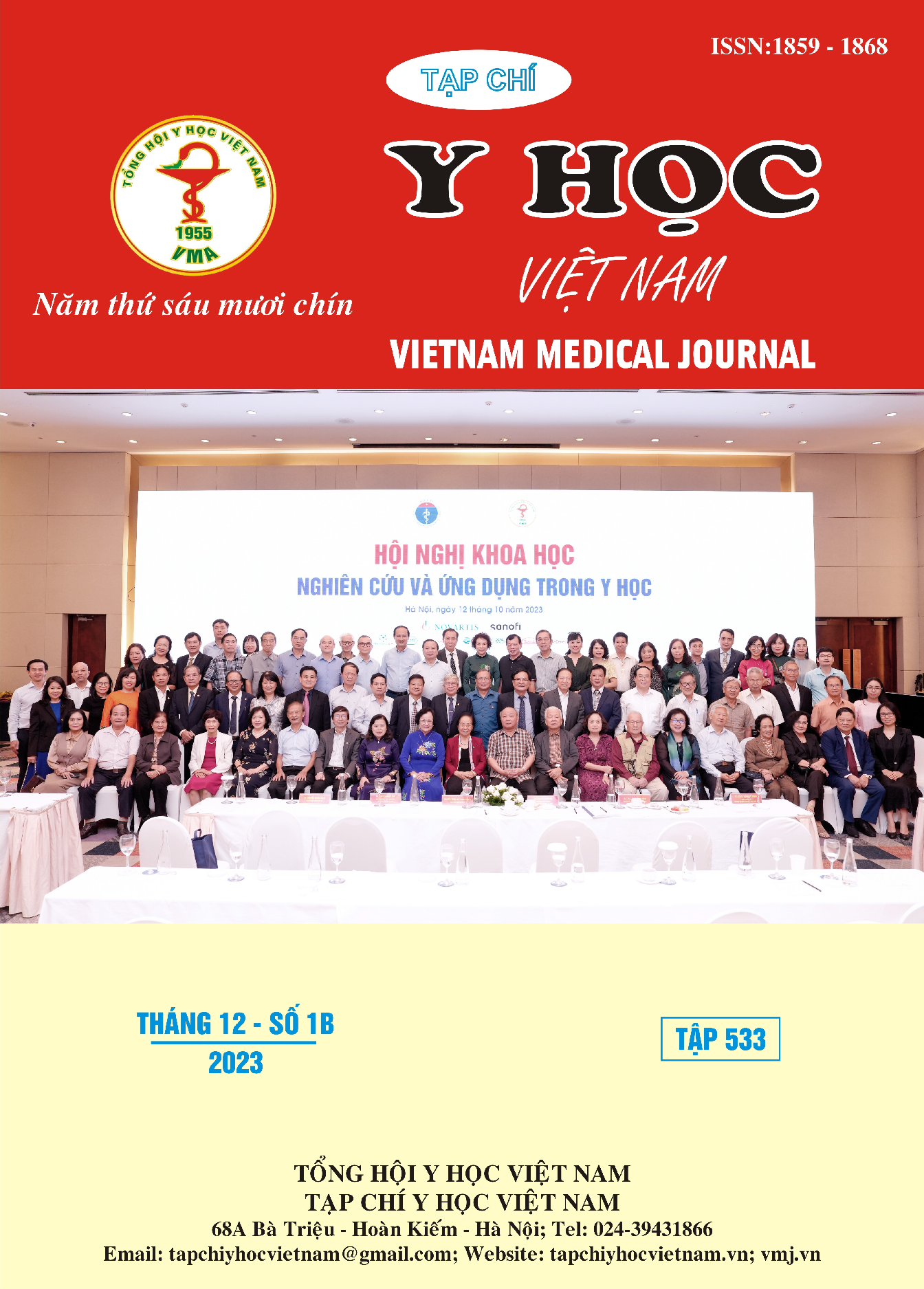DISTRIBUTION CHARACTERISTIC OF BACTERIAL PATHOGENS ISOLATED FROM URINE SPECIMEN OF PATIENTS AT MILITARY HOSPITAL 103 (9/2022-3/2023)
Main Article Content
Abstract
Objective: Studying the distribution characteristic of bacterial pathogens isolated from urine specimens of patients at Military Hospital 103 from September 2022 to March 2023. Subject and methods: This was a descriptive study. The study subject was urine for bacterial culture of patients at Military Hospital 103. The variables of the study were hospital wards, patients’ sex and age, and the results of bacterial culture and identification. Results: The total number of urine was 674. Of these, bacterial pathogens were isolated from 137 specimens, accounting for 20.33%. The bacterial pathogen rate isolated from the urine of female patients (24.89%) was higher than male patients (17.78%). The bacterial pathogen proportion isolated from the urine of patients ≥ 50 years old (19.87%–23.26%) was higher than that of patients in the 20–49 years age group (15,79%–16,95%). The highest proportion of bacterial pathogens isolated from urine was from the Urology department (31.58%) and other surgical wards (30.0%). On the other hand, the lowest proportion of bacterial pathogens isolated from urine was from the surgical intensive care unit (14.29%). Gram-negative bacteria (75.91%) were the most common among bacteria causing urinary tract infections. The proportion of Escherichia coli (32.85%), Pseudomonas aeruginosa (21.17%), Enterococcus spp. (21.17%) and Klebsiella spp. (17.52%) was the highest among bacteria causing urinary tract infections. Conclusion: Our study showed that the proportion of bacterial pathogens isolated from the urine of patients at Military Hospital 103 was 20.33% in the period from September 2022 to March 2023. The proportion of bacterial pathogens isolated from the urine of female patients was higher in male patients. The proportion of bacterial pathogens isolated from urine was relatively high in patients ≥50 years old and highest in patients >80 years old. E. coli, P. aeruginosa, Enterococcus spp., and Klebsiella spp. were the most common bacteria causing urinary tract infections.
Article Details
References
2. R. Ozturk and A. Murt, Epidemiology of urological infections: a global burden. World J Urol,(2020). 38(11), 2669-2679.
3. Amy L. Leber, Clinical Microbiology Procedures Handbook. 2016: ASM Press.
4. Clinical Lab Standards Institute, Performance Standards for Antimicrobial Susceptibility Testing (M100). 33 ed. 2023: Clinical Lab Standards Institute.
5. Trần Anh Đào Phan Thị Lụa, Nguyễn Vũ Trung, Tỷ lệ nhiễm và tính kháng kháng sinh của vi khuân gây nhiễm khuẩn tiết niệu ở bệnh nhân điều trị tại Bệnh viện hữu nghị đa khoa Nghệ An năm 2020. Tạp chí Truyền nhiễm Việt Nam, (2021). 2.
6. Phạm Minh Hưng Phạm Hiền Anh, Tình hình kháng kháng sinh của các chủng vi khuẩn gây nhiễm khuẩn tiết niệu tại Bệnh viện Đa khoa Quốc tế Thu Cúc giai đoạn 2018 - 2019. Tạp chí Y dược lâm sàng 108,(2022). 3.
7. M. Odoki, et al., Prevalence of Bacterial Urinary Tract Infections and Associated Factors among Patients Attending Hospitals in Bushenyi District, Uganda. Int J Microbiol,(2019). 2019, 4246780.
8. T. Addis, et al., Bacterial uropathogens and burden of antimicrobial resistance pattern in urine specimens referred to Ethiopian Public Health Institute. PLoS One,(2021). 16(11), e0259602.


